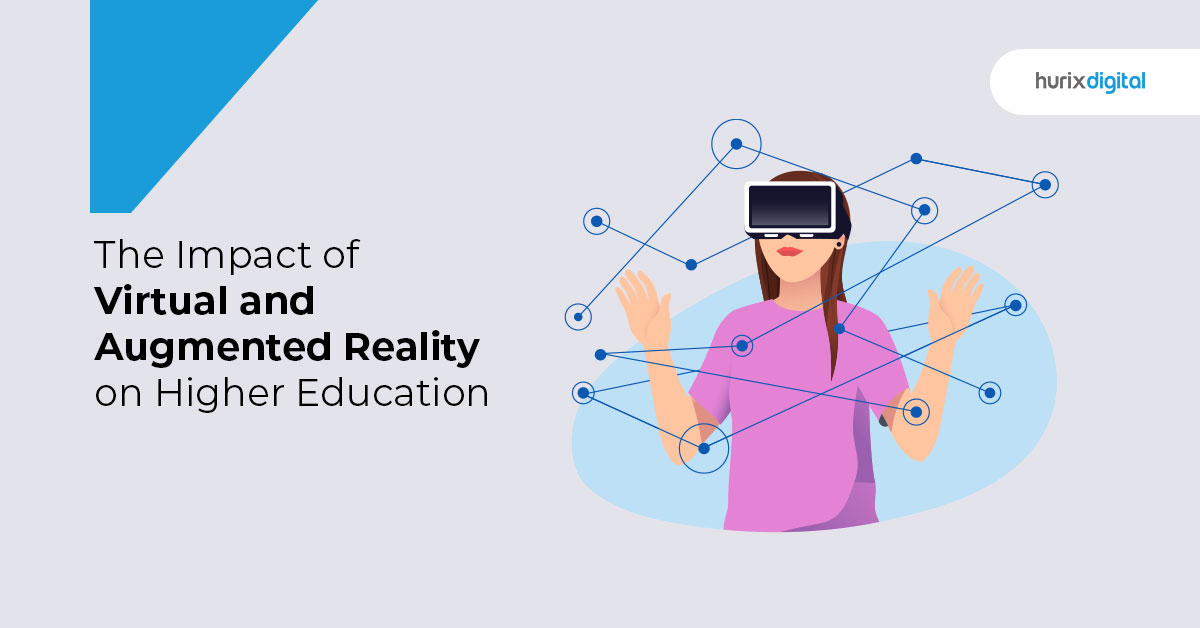hurix
November 16, 2023
The Impact of Virtual and Augmented Reality on Higher Education
Summary
This article discusses the benefits and impacts that AR and VR bring to higher education. It also discusses the various ways in which these immersive technologies can be used to improve the learning experience.
Table of Contents:
Introduction
Augmented reality (AR) and virtual reality (VR) are immersive technologies that equip users with the capability to experience digitally produced content in actual and virtual arenas. Augmented reality overlays digital information such as sounds, videos, and graphics onto the real-world environment. Virtual reality constructs artificial environments that are completely digital and immersive. These technologies are increasingly being used across industries, becoming a leading higher education solution and a workforce learning solution. According to a report, the global market for AR and VR technology is projected to grow at a strong CAGR of 55.7% until 2028. These immersive technologies offer myriad possibilities for learning, particularly in the higher education industry.What is the Impact of AR and VR on Higher Education?










